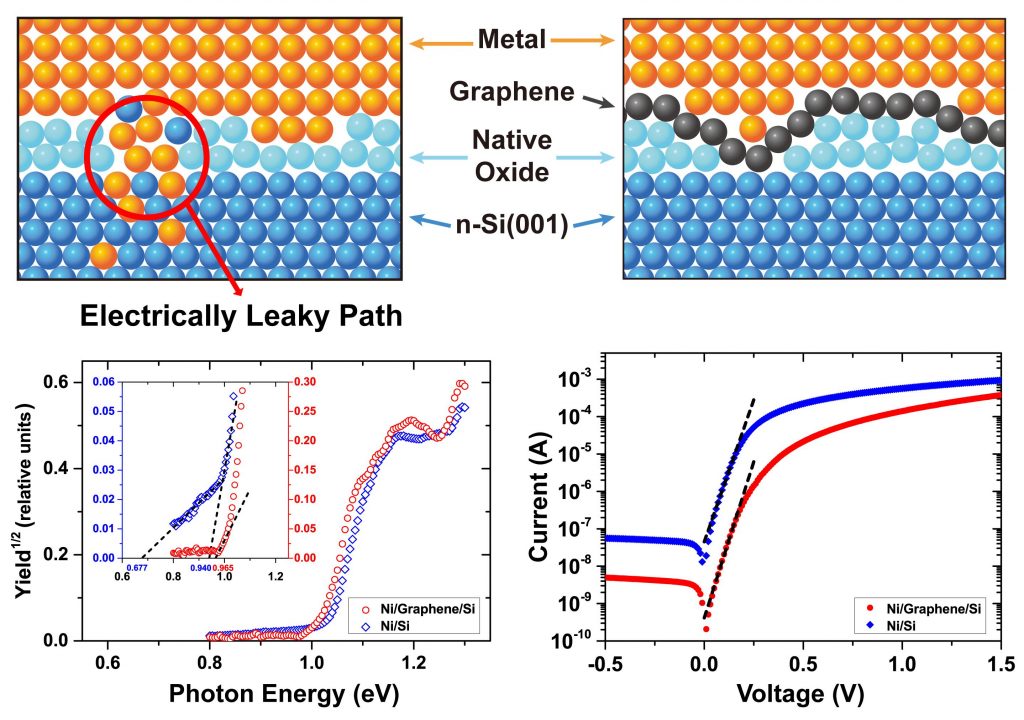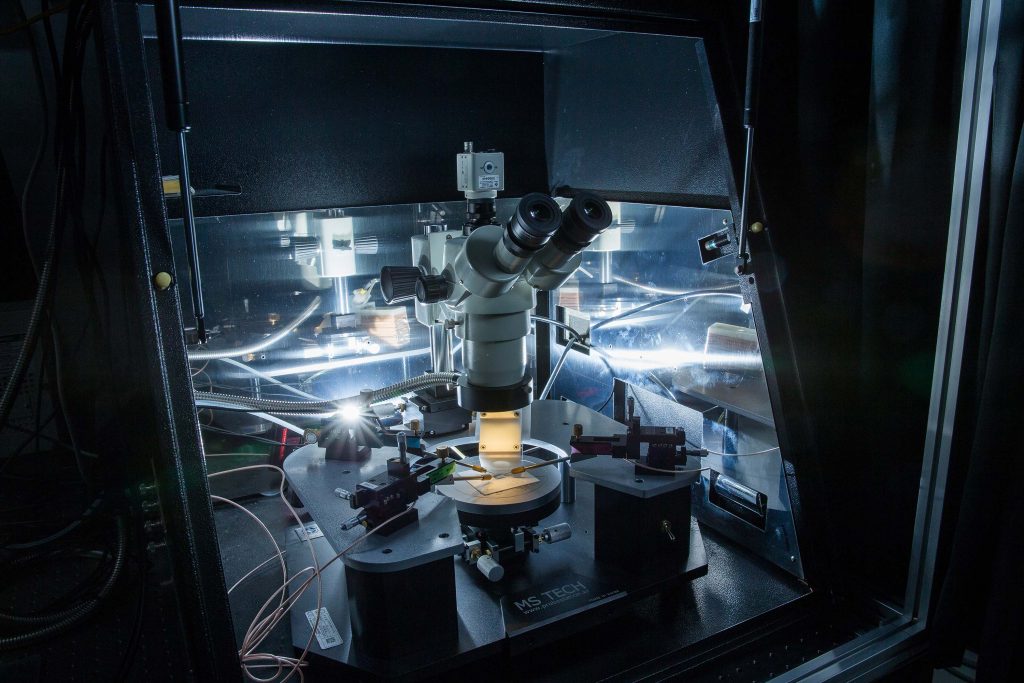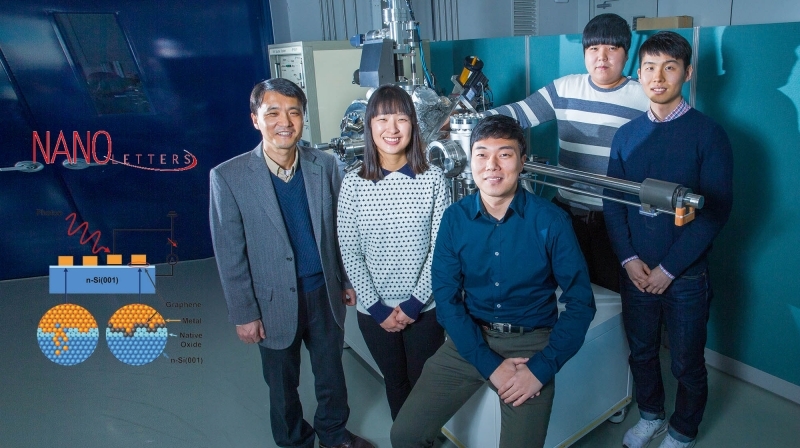A team of researchers, affiliated with UNIST has created a new technique that greatly enhances the performance of Schottky Diodes (metal-semiconductor junction) used in electronic devices. Their research findings have attracted considerable attention within the scientific community by solving the problem of metal-semiconductor, which had remained unsolved for almost 50 years.
As described in the January issue of Nano Letters, the researchers have created a new type of diode with a graphene insertion layer sandwiched between metal and semiconductor. This new technique is expected to significantly contribute to resolving the long-term issue in the semiconductor industry.
The Schottky diode is one of the oldest and most representative semiconductor devices, formed by the junction of a semiconductor with a metal. However, it has been impossible to produce an ideal diode, as the leakage current rapidly increases due to the unexpected and random atomic intermixing along the interface between two materials.

The schematic view of internal photoemission (IPE) measurements on metal/n-Si(001) junctions with Ni, Pt, and Ti electrodes for with and without a graphene insertion layer.
In the study, Professor Kibog Park of Natural Science solved this problem by inserting a graphene layer at the metal-semiconductor interface. The results indicated that, due to the inserted graphene consists of one layer of carbon atoms, the phenomenon of intermixing of atoms almost disappears and the operating characteristics matches well with the theoretical predictions.
“The space between the carbon atoms that make up the graphene layer has a high quantum mechanical electron density and therefore no atoms can pass through it,” says Professor Park. “Therefore, by inserting the graphene layer between metal and semiconductor, it is possible to overcome the inevitable atomic diffusion problem.”
The study has also confirmed the the theoretical prediction that “In the case of silicon semiconductors, the electrical properties of the Schottky junction hardly change regardless of the type of metal,” according to Hoon Hahn Yoon (Combined M.S./Ph.D. student of Natural Science), the first author of the study.
The internal photoemission method was used to measure the electronic energy barrier of the newly-fabricated metal/graphene/n-Si(001) junction diodes. The Internal Photoemission (IPE) measurement system in the image shown above has contributed greatly to these experiments. This system has been developed by four UNIST graduate students (Hoon Han Yoon, Sungchul Jung, Gahyun Choi, and Junhyung Kim), which was carried out as part of an undergraduate research project in 2012 and was supported by the Korea Foundation for the Advancement of Science and Creativity (KOFAC).

Shown above is the Internal Photoemission (IPE) Measurement System, developed by Hoon Hahn Yoon, combined M.S./Ph.D. student of Natural Science at UNIST.
“Students have teamed up and carried out all the necessary steps for the research since they were undergraduates,” Professor Park says. “Therefore, this research is a perfect example of time, persistence, and patience paying off.”
This study has been jointly conducted by Professor Hu Young Jeong of the UNIST Central Research Facilities (UCRF), Professor Kwanpyo Kim of Natural Science, Professor Soon-Yong Kwon of Materials Science and Engineering, and Professor Yong Soo Kim of Ulsan University. It has been also supported by the National Research Foundation of Korea, Nuclear Research Basis Expansion Project, as well as the Global Ph.D Fellowship (GPF).
Journal Reference
Hoon Hahn Yoon et al., “Strong Fermi-Level Pinning at Metal/n-Si(001) Interface Ensured by Forming an Intact Schottky Contact with a Graphene Insertion Layer,” Nano Letters, (2017).




















